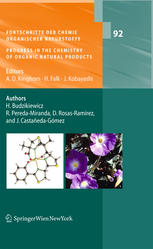

Most ebook files are in PDF format, so you can easily read them using various software such as Foxit Reader or directly on the Google Chrome browser.
Some ebook files are released by publishers in other formats such as .awz, .mobi, .epub, .fb2, etc. You may need to install specific software to read these formats on mobile/PC, such as Calibre.
Please read the tutorial at this link: https://ebookbell.com/faq
We offer FREE conversion to the popular formats you request; however, this may take some time. Therefore, right after payment, please email us, and we will try to provide the service as quickly as possible.
For some exceptional file formats or broken links (if any), please refrain from opening any disputes. Instead, email us first, and we will try to assist within a maximum of 6 hours.
EbookBell Team

4.0
16 reviewsResin glycosides are part of a very extensive family of secondary metabolites known as glycolipids or lipo-oligosaccharides and are constituents of complex resins (glycoresins) (1) unique to the morning glory family, Convolvulaceae (2). These active principles are responsible for the drastic purgative action of all the important Convolvulaceous species used in traditional medicine throughout the world since ancient times. Several commercial purgative crude drugs can be prepared from the roots of different species of Mexican morning glories. Their incorporation as therapeutic agents in Europe is an outstanding example of the assimilation of botanical drugs from the Americas as substitutes for traditional Old World remedies (3). Even though phytochemical investigations on the constituents of these drugs were initiated during the second half of the nineteenth century, the structure of their active ingredients still remains poorly known for some examples of these purgative roots. During the last two decades, the higher resolution c- abilities of modern analytical isolation techniques used in conjunction with pow- ful spectroscopic methods have facilitated the elucidation of the active principles of these relevant herbal products. This chapter describes the ethnobotanical information associated with the p- gative morning glory species and how traditional usages were instrumental in plant selection for chemical studies. The advantages and limitations of available analy- cal techniques for the isolation, puri?cation, and structure characterization of the individual constituents of these complex glycoconjugates are also discussed.